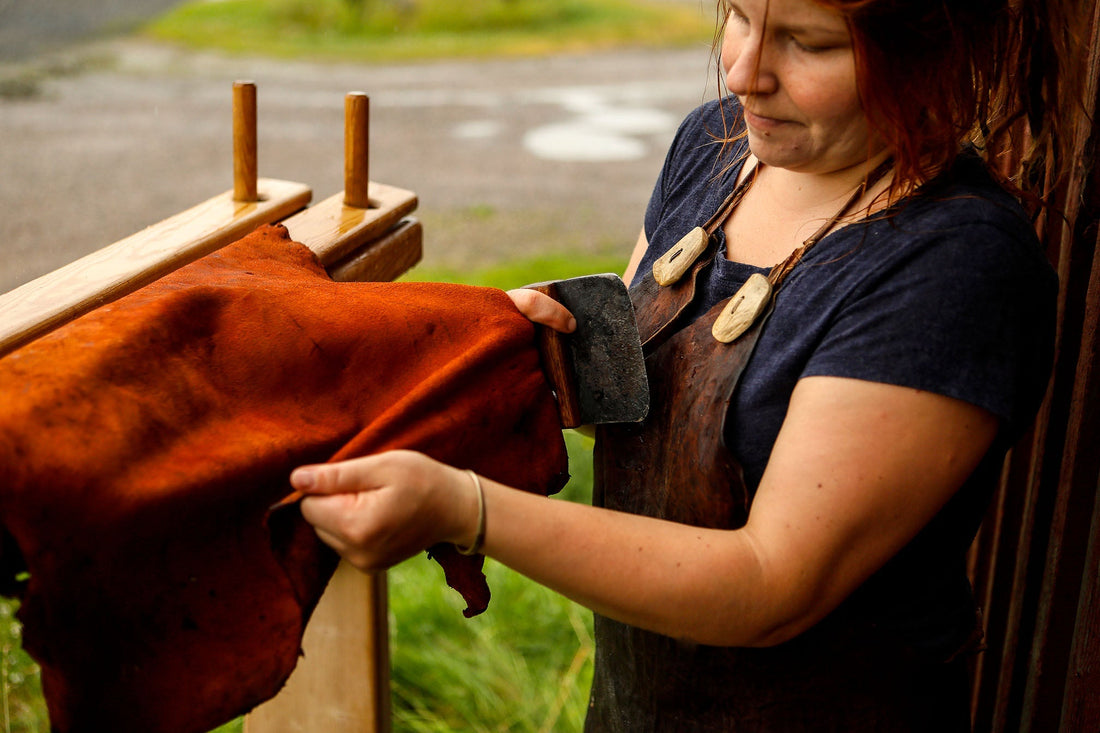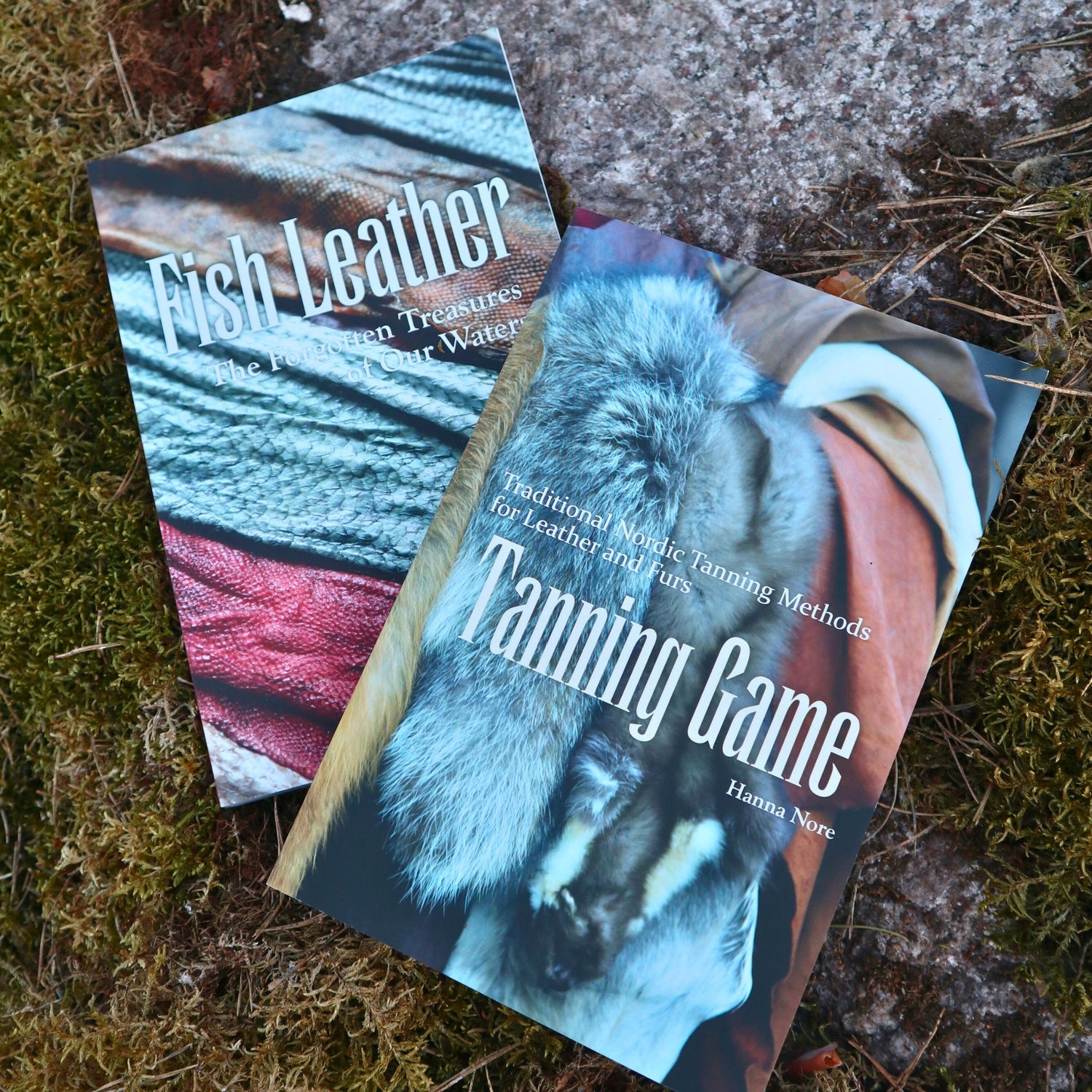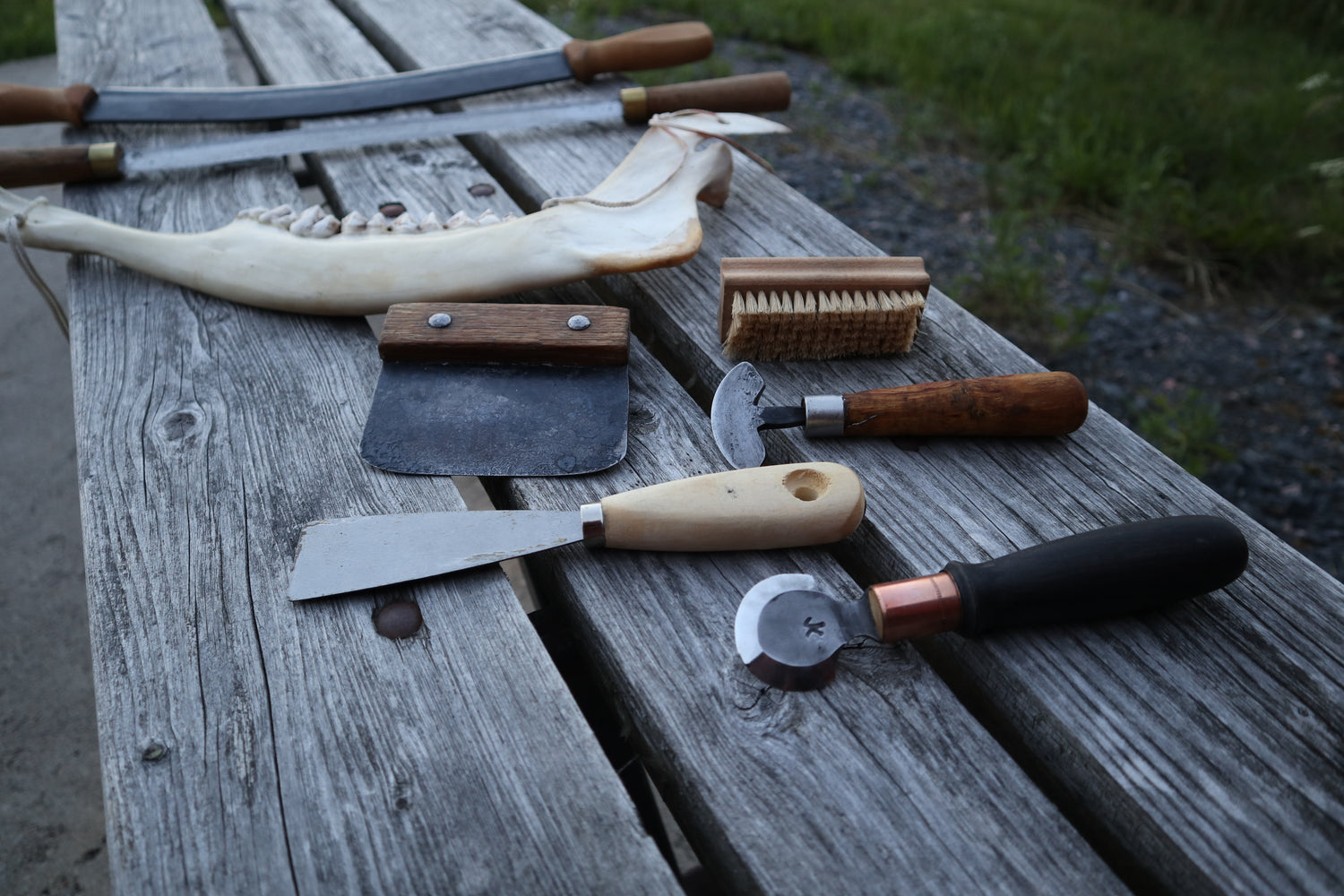
What is Traditional Tanning?
Hanna NoreNatural and traditional tanning is a vanishing traditional craft which emphasises the importance of refining all parts of an animal. Nothing should ever be thrown away. Traditional tanning is a way to process raw skin completely by hand, using chemicals sourced from the local wilderness. A traditional tanner attempts to see and discover the best possible tanning method for each raw skin and, through this, the best usage for that skin. A carcass turns into something beloved, something beautiful and unique.
Leather is one of the oldest materials harnessed by humans. Tanning with materials found in nature has been a prerequisite for survival. This ancient way of working leather is still in use around the world among indigenous people. Their way of living according to the cycle of nature, utilizing its varied opportunities and offerings with respect, fascinates me. I repeat: nothing is to be thrown away.

Traditional tanners use chemicals that can be sourced from local nature. For example, Finland has a wide variety of trees and woody plants that have tannin in their bark. This acid, which also shows up in red wine, can be used at home as raw material for traditional tanning. This technique, known as vegetable tanning, produces durable, full-grain leather with a beautiful finish. It is also suitable for tanning certain types of pelts.
Another traditional tanning method is fat tanning, which utilizes the composition of unsaturated fatty acids. Organically-sourced egg yolks will produce velvety smooth furs and leathers. The tanning process with these, nature’s own chemicals, is lengthy, but the end result is nature-friendly, ethical, washable, home-grown and respectful of traditions – and you don’t have to compromise on looks either!
As a living material, leather is challenging, since the number of variables in the tanning process is enormous. Every day at the tanner’s rack is different. Every raw skin tells its own story. During tanning you can see the entire lifespan of the animal on its hide: battle scars, insect bites, and marks left by living conditions, procreation and death.
A natural tanner’s connection to nature is strong.
With natural and traditional tanning methods we can produce ecological and ethical leather and furs that will last from one generation to the next. They are an excellent alternative to heavy metal-laden industrially tanned goods.
This article is an extract of Tanning Game: Traditional Nordic Tanning Methods for Leather and Furs by Hanna Nore (Rödmossa Oy, 2022).

Hanna Nore
Hanna Nore is a master traditional tanner, teacher of traditional tanning methods and the author of Fish Leather and Tanning Game. She lives and works on Kimito Island in the Finnish archipelago.


